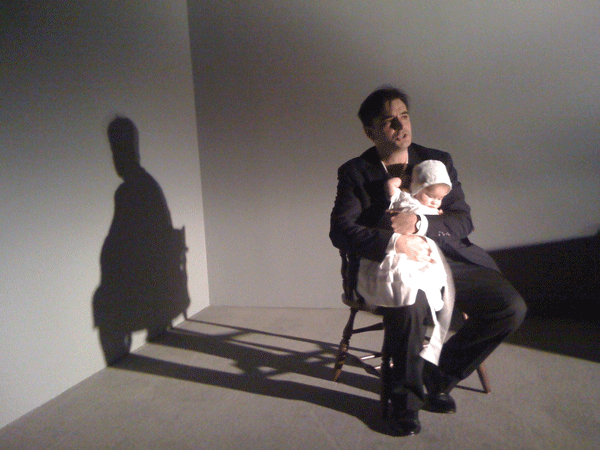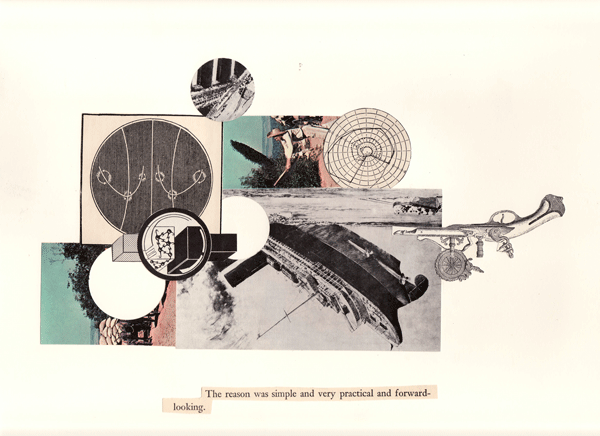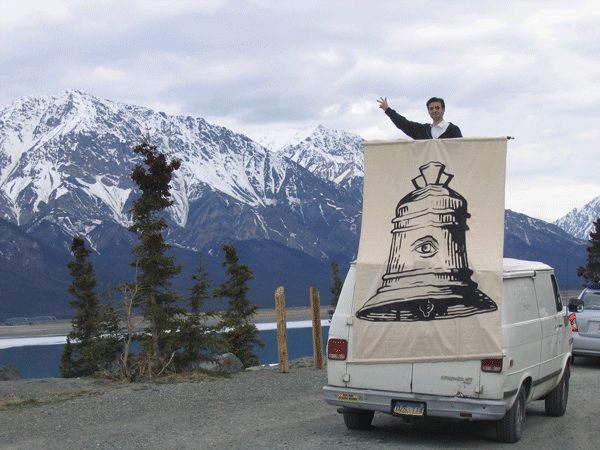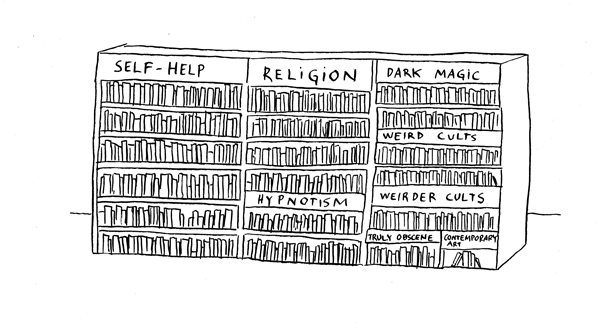Modernity in art is not, as is often claimed, solely a matter of the progressive emancipation of materials and colors; by the end of the 19th century, both had earned the right to fight back against the dominance of the image. The kind stork that supposedly delivered the baby of abstraction is a fiction designed to reassure sensitive young people. But let's look modern art (20th century) and contemporary art (the 21st) in the face: rarely in human history have we seen so much massacre and so much madness.
If we agree that art is not an innocent fantasy independent of its social circumstances, we need to make some corrections to its official records. For those of us who dreamed of living in that best of all possible worlds invented by Maurice Denis in 1890, when a painting was "before being a war horse, a naked woman, or some other anecdote, essentially a flat surface covered with colors put together in a certain order," we would probably be wise to think of our era as having begun a century earlier, in 1799, with the appearance of Goya's Caprices. That series was announced in a Madrid newspaper on the sixth of February of that crucial year, and the announcement ended with these admirable words: "[…] painting (like poetry) chooses from the universal whatever it considers proper to its ends; it brings together, in a single imaginary character, circumstances and characteristics that nature has scattered among many, and, if this combination is insightfully arranged, a happy imitation results, by which painting, when truly artful, earns the title of inventor as opposed to that of servile copyist. Sold in Disenchantment Street in the store that sells perfumes and liqueurs, this collection of 80 prints is priced at 320 réaults."
And no doubt, it was a sleep of reason similar to that depicted by Goya in plate 43 of his Caprices that engendered the creatures that appear in James Rielly's watercolors in the show at the École des Beaux-Arts in Paris. The veiled dwarf of Cowboy and the running phantoms of Small Ghost and We Are Owls directly evoke the naïve servants and madam-mothers, similarly well-wrapped, that people Goya's works. And the celestial battle between the Virgin and the devil that takes place over the Painted House recalls the Sabbaths of Correción and Todos caerán. Rielly incorporates additionally captivating and disquieting reveries into this image—in particular, one of a neighbor's house inspired by the Facteur Cheval's amazing creations, which the neighbor had covered entirely in ceramics. The house has since been destroyed, and perhaps the masterpieces it might have contained, as well.
And though there are clear links between Goya's visions and Rielly's, the latter's pastel tones are dramatically different from the former's lugubrious shades of black, grey, and ocher. This is not only a difference of 200 years; it also reflects the responses of two distinctly different cultures—it's been a long time since every consideration of national particularity passed for a Petainist revindication (and it's hard to see why what goes without saying for music or cooking doesn't go equally for painting). Rielly is an expert practitioner of the understatement, which Stuart Morgan once called the United Kingdom's national sport. (A British person, he claimed, always tries to say a little less than what he thought necessary.) It's no cliché to say that in London, The Sleep of Reason would be prudently called nonsense, and I don't need to state that James Rielly is a British citizen, even if he has lived in France for the past twenty years, in a region in the southwest that includes so many of his compatriots that English is the region's second language, a region that represents Europe as we dream it, but that it is, alas, far from yet being.
As a medium, watercolor is not a "weak water" as opposed to etching's "eau-forte." In fact, it's a particularly intransigent medium, one that tolerates no error, hesitation, or correction, and that requires a discipline in the execution that cedes nothing to the art of engraving. Rielly chooses Tibetan or Chinese papers with distinct, irregular textures for his watercolors, rather than the conventionally-grained papers that can make watercolors seem vulgar and as if they're trying to cheat on the drying times required by the medium. Rielly, instead, sponges up the excess, creating print-like effects more frequently associated with lithography. His colors are suave and pale—just like those of English boiled sweets—which contradicts or attenuates the crudity of the images, creating the visual understatement that Stuart Morgan aptly mentioned. But this is not the only link that Rielly has with his country's popular culture, nor the only source of the peaceful horror that emanates from his works.
For a long time I wondered what deeply buried memory his deformed children with their royal blue eyes touched in me, until chance brought me back to the astonishing Village of the Damned. Made in 1960 by Wolf Rilla, a British filmmaker—all the more so, if of one can put it that way, because he was so recently so; his parents had escaped to London from Nazi Germany in 1934. The film counts, along with Don Siegel's The Invasion of the Body Snatchers, among the most successful of a genre closely linked to the Cold War period; it tells a tale of invaders, who, diffused throughout the population of a country, go about exterminating it—or, more precisely, replacing it—from within, in another version of the "fifth column," reviving old myths and specters. The children in the Village of the Damned, engendered during a mysterious "night of the Walpurgis," while their mothers were asleep, are only different from ordinary children in their unusually high intelligence, their unnaturally disciplined hair, and their unnaturally light eyes. These are the very eyes that we see in Rielly's watercolors.
One of them gives us perhaps an additional clue. It depicts, with a remarkable economy of means, a modest chapel with an open bell tower, like you might see in Brittany or Wales—where Rielly comes from. It is , in fact, the Chapel of St. Gwyfan, built on a tiny island whose cliffs are fortified to keep the ocean from washing them away. Deprived of its bell, this retreat has become silenced, and has no doubt been long deserted by the faithful; on its sides, Rielly has painted the famous blue eyes, staring at you. The image is, in its simplicity, extraordinarily efficient. War propaganda during the 1940s came up with, or resurrected from ancient tradition, the slogan "Walls Have Ears" to warn civilians of the dangers of idle chatter that might convey crucial information to enemy agents. But, as is so often the case, this expression, this "image," even if it's perfectly comprehensible, doesn't create any picture in our minds. (For that matter, there's an endless list of supposedly visual metaphors that never get beyond the barrier of words—for instance, no one ever pictures someone trying to head off a problem as poised with a pair of garden sheers "nipping it in the bud.") The rare attempts at picturing a wall of bricks fitted out with an aural organ were at best comical, even though the gaze of a house seems perfectly obvious. It's poetry, film, and painting that, in this case, grasp the point, as opposed to popular language. Nerval: "Fear from the blind wall an invasive gaze / Words hold to the very matter of the world / Don't let that matter serve a purpose impure!" clearly says that a wall is not hearing but sight. The watercolor St Gwyfan compounds this by also evoking the inquisitive eyes of the modernist house of Jacques Tatï's Mon Oncle.
A priori, and even if you don't know the Welsh village of Cribinau, there can be no doubt that the eyes are on the watercolor and not on the chapel. But the inverse is not impossible—on the four faces of the Stupa of Swayambhunath in Katmandu, the painted eyes seem to survey the entire world around it. Perhaps Rielly's contact with India, where he often travels, and which informs an integral part of his British imaginary, helped him to conceive of a syncretic cult in which chapels could have eyes and could warmly shelter creatures that, though deformed, are not diabolic—dwarves, children with two noses, four arms, three eyes. It's our bland, monotheistic images that, when, by some miracle, they're allowed, have forged our conservative depictions of the human body. For centuries, the art of the western world has only given jubilant and eccentric forms to demons, while Hinduism hasn't hesitated to people its pantheon with bodies with three heads, or an elephant's mask, or multiple pairs of arms. And this tells us, perhaps, that Rielly's Caprices, passing by the Ganges and Five O'Clock Tea, are not rooted in the same nightmare as Goya's, at the brink of a modernity whose horrors he depicts. Rielly's are definitely haunted by monsters, but they are monsters that speak both of the ill of which they're capable and of the peace that they demand; they speak of pain and of its redemption, of the absurdity of our lives and the vanity that enrages us—that of appeased monsters, wearing rainbow mascara in their hell. Paradoxically, there's something angelic in Rielly's watercolor village of the damned, if we accept G.K. Chesterton's maxim—angels can fly because they take themselves lightly—after all, it's not a matter of occasionally confusing a plate of breakfast eggs with a beauty mask.
In http://jamesrielly.com/





